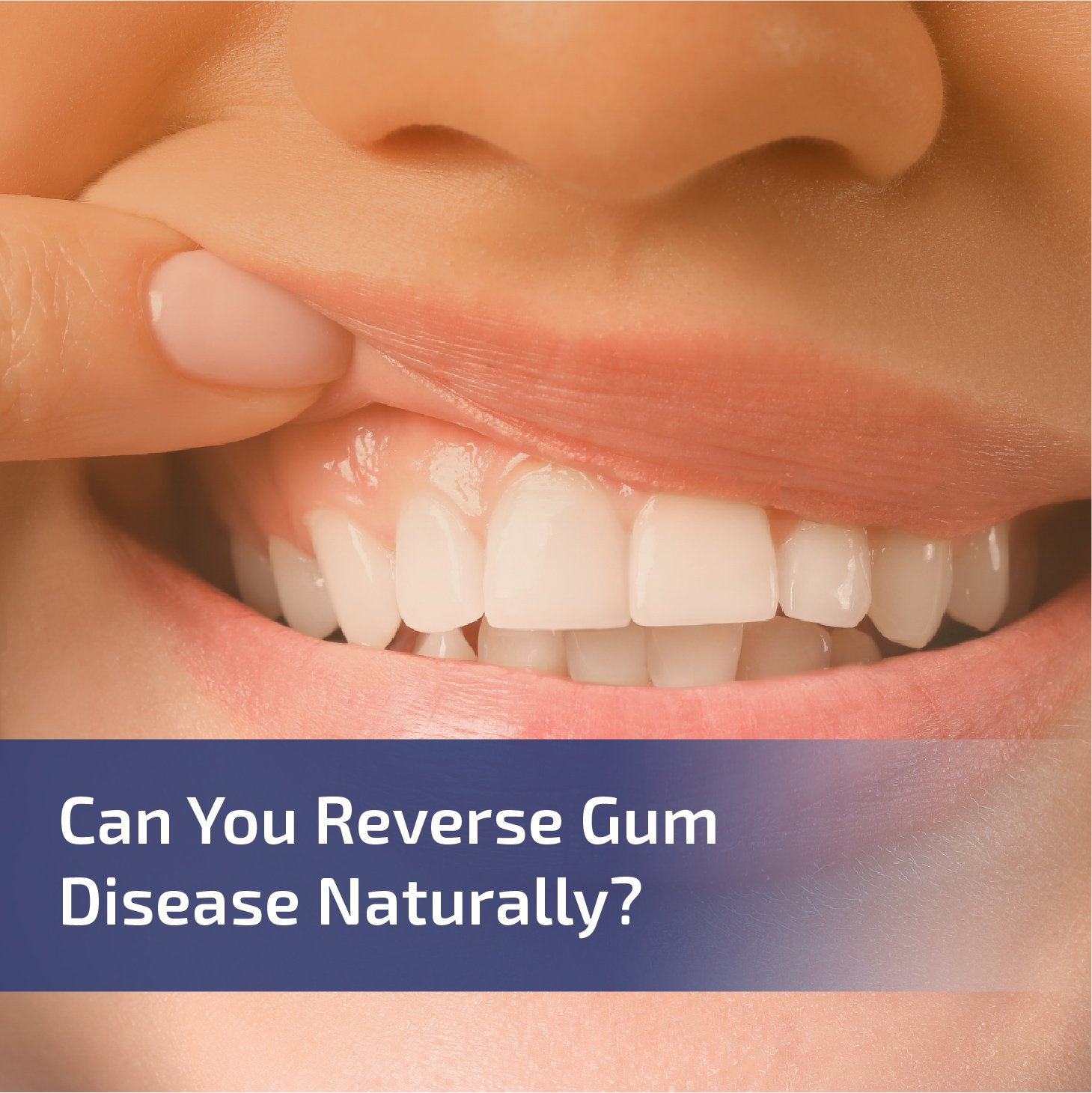
Gum disease, also known as periodontal disease, is a common condition that affects the gums and supporting tissues of the teeth. It is characterized by inflammation, bleeding gums, bad breath, and eventually, the loss of teeth if left untreated.
While gum disease can be a serious issue, many people wonder if it is possible to reverse it naturally, without invasive treatments or medications. In this article, we will explore the topic of reversing gum disease naturally, providing insights, tips, and FAQs to help you maintain healthy gums and prevent further damage.
Gum disease is primarily caused by plaque, a sticky film of bacteria that forms on the teeth and gums. If not removed through proper oral hygiene practices such as brushing, flossing, and regular dental cleanings, plaque can harden into tartar, leading to gum inflammation and disease. However, with the right approach and commitment to good oral care, you can improve gum health and potentially reverse the early signs of gum disease.
The Importance of Good Oral Hygiene
Maintaining good oral hygiene is crucial for preventing and treating gum disease. Here are some essential practices to incorporate into your daily routine:
1. Brushing Twice a Day
Brushing your teeth at least twice a day with a soft-bristled toothbrush and fluoride toothpaste is essential for removing plaque and maintaining gum health. Remember to brush gently, using small circular motions to clean all surfaces of the teeth and gums.
2. Flossing Daily
Flossing helps remove plaque and food particles from areas that a toothbrush cannot reach, such as between the teeth and along the gumline. Make it a habit to floss at least once a day, preferably before bedtime.
3. Using Antimicrobial Mouthwash
Rinsing with an antimicrobial mouthwash can help reduce bacteria in the mouth and prevent gum disease. Look for mouthwashes that are specifically designed for gum health and contain ingredients like chlorhexidine or essential oils.
4. Eating a Balanced Diet
A nutritious diet plays a significant role in gum health. Include foods rich in vitamins C and D, calcium, and antioxidants, as they promote gum tissue strength and help fight infection. Avoid excessive consumption of sugary and acidic foods, as they can contribute to plaque formation.
5. Quitting Smoking
Smoking is a significant risk factor for gum disease and can hinder the healing process. If you smoke, quitting is crucial for improving your gum health and overall well-being.
Traditional Treatments for Gum Disease
Dental Cleanings:
Description: This is the standard cleaning you receive during regular dental check-ups. It involves removing plaque and tartar from above and below the gum line.
Frequency: Typically, dental cleanings are recommended every six months, but for those with gum disease, more frequent cleanings might be necessary.
Scaling and Root Planing:
Description: Often referred to as a “deep cleaning,” this procedure involves scraping away tartar and plaque from below the gum line (scaling) and then smoothing the rough spots on the tooth root (planing). This smooth surface helps the gums reattach to the teeth.
Frequency: The frequency of this treatment varies based on the severity of gum disease and how quickly tartar builds up.
Antibiotics:
Description: Oral or topical antibiotics can help reduce the bacterial infection causing gum disease. These can be in the form of mouth rinses, gels, or oral tablets or capsules.
Frequency: The dentist or periodontist will prescribe antibiotics based on the specific needs and severity of the infection.
Surgical Treatments:
Flap Surgery/Pocket Reduction Surgery: This involves lifting the gums back to remove tartar and then suturing the gums back in place, so they fit snugly around the tooth.
Bone Grafts: Used when the bone surrounding the tooth root has been destroyed. The graft may be composed of small fragments of your own bone, or synthetic bone.
Soft Tissue Grafts: This procedure reinforces thin gums or fills in places where gums have receded.
Guided Tissue Regeneration: Used when the bone supporting your teeth has been destroyed. It stimulates bone and gum tissue growth.
Bone Surgery: After flap surgery, the bone around the tooth may be reshaped to decrease craters where bacteria can live and multiply.
Limitations and Considerations:
1. Not a One-Time Solution:
Gum disease treatments require consistent follow-up and often adjustments in oral care routines to prevent recurrence.
2. Cost:
Some treatments, especially surgical options, can be expensive, and not all insurance plans may cover them.
3. Pain and Discomfort:
Some procedures, like scaling and root planing or surgeries, can cause discomfort. However, pain management options are typically provided.
4. Recovery Time:
Surgical treatments may come with a required recovery time, during which the patient might experience swelling, pain, or bleeding.
5. Antibiotic Resistance:
Overreliance on antibiotics for treating gum disease can contribute to antibiotic resistance, making infections harder to treat in the future.
6. Maintenance:
Even after treatment, regular dental check-ups and improved oral hygiene practices are essential to prevent the return of gum disease.
Conclusion
While reversing gum disease naturally is possible in the early stages, it’s essential to be proactive in maintaining good oral hygiene and seeking professional dental care when needed. By incorporating proper brushing, flossing, a balanced diet, and a healthy lifestyle, you can support gum health and potentially reverse the early signs of gum disease. Remember to consult with your dentist regularly and follow their recommendations for the best outcome. With dedication and consistent care, you can take control of your oral health and enjoy a confident smile.